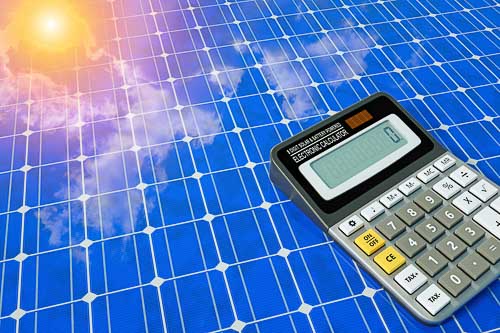Solar Return on Investment
Albury Wodonga Solar Professionals, CJ Power Solutions
 In today's dynamic business landscape, sustainability and cost-efficiency are not just buzzwords but essential pillars for long-term success.
In today's dynamic business landscape, sustainability and cost-efficiency are not just buzzwords but essential pillars for long-term success.
Embracing renewable energy sources, particularly solar power, has emerged as a compelling strategy for businesses across Australia, particularly in New South Wales and Victoria.
Understanding Commercial Solar Return on Investment (ROI)
The ROI of commercial solar power measures the financial benefits a business can expect from investing in a solar system. Typically calculated by considering the upfront costs of the system, the projected savings on electricity bills, and any additional income from government incentives.
Factors Influencing Commercial Solar ROI
Several factors can influence the ROI of commercial solar power in New South Wales and Victoria:
- Size of the Solar System: The larger the solar system, the greater the potential for electricity savings, leading to a higher ROI.
- Electricity Consumption Patterns: Businesses with higher daytime electricity consumption can maximise solar energy utilisation, resulting in a more favourable ROI.
- Electricity Tariff Rates: Businesses in areas with higher electricity tariff rates can reap more significant savings from solar power, enhancing their ROI.
- Government Incentives: Government incentives, such as Small-scale Technology Certificates (STCs) and feed-in tariffs, can significantly reduce the upfront costs and boost ROI.
Commercial Solar Case Studies: Quantifying Financial Benefits
To demonstrate the tangible financial benefits of commercial solar power, let's consider two case studies from Australian businesses:
Case Study 1: A Manufacturing Facility in Sydney, New South Wales
A manufacturing facility in Sydney installed a 500 kW solar system, generating enough clean energy to cover approximately 30% of its electricity needs. This transition to solar power has resulted in annual savings of over $30,000, translating to an ROI of over 20%.
Case Study 2: A Retail Shopping Mall in Melbourne, Victoria
A retail shopping mall in Melbourne installed a 1.5 MW solar system, generating enough clean energy to offset approximately 70% of its electricity needs. This shift to solar power has resulted in significant savings on electricity bills, estimated at over $150,000 annually. This impressive cost reduction translates to an ROI of over 30%.
Additional Financial Benefits of Commercial Solar Power
Apart from direct electricity savings, commercial solar power offers other financial benefits:
- Increased Property Value: Properties equipped with solar power systems are often valued higher than those without, enhancing the property's overall value.
- Potential for Additional Income: Some businesses may be eligible to earn additional income through feed-in tariffs, which compensate them for the excess solar energy they export back to the grid.
Conclusion
Commercial solar power presents a compelling financial opportunity for New South Wales and Victoria businesses. With attractive government incentives, significant electricity savings, and potential additional income streams, solar power is a strategic investment that can enhance a business's financial position and contribute to a sustainable future.